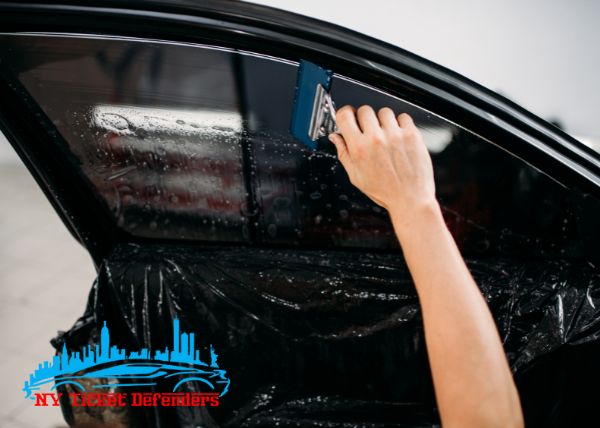Just How Vehicle Window Tinting Keeps Your Car Cool in Hot Weather
Window Tinting Rules and Guidelines: What You Need to Know Before Tinting Your Vehicle
Prior to proceeding with home window tinting for your lorry, it is vital to acquaint yourself with the diverse legislations and standards that regulate this method across various states. These laws dictate the permissible levels of tint darkness, typically determined by visible light transmission (VLT) portions, and consist of certain specifications for front windshields aimed at making certain road safety and security. Additionally, specific jurisdictions may offer medical exemptions for people with certifying conditions. Understanding these complexities can conserve you from possible legal implications, but what are the certain rules in your state?
Overview of Window Tinting Laws
Window tinting regulations are regularly based on variant across different territories, reflecting local regulations and safety factors to consider. These legislations determine the permissible degrees of color darkness and reflectiveness on car home windows, ensuring that motorists keep adequate visibility while also shielding against unsafe UV rays and heat.
A lot of laws classify window tinting based upon the Visible Light Transmission (VLT) percentage, which shows the amount of light that can go through the window. Generally, reduced VLT portions represent darker colors. Regulations typically distinguish between the front, side, and back windows, with more stringent limitations applied to the front windscreen to improve safety and security for both the vehicle driver and other road customers.
Conformity with window tinting laws is important, as violations can result in fines, obligatory removal of the color, and prospective increases in insurance coverage premiums. It is necessary for car proprietors to acquaint themselves with local laws before proceeding with window tinting installations.
State-by-State Tint Regulations
Recognizing the details home window tinting policies in each state is vital for automobile owners seeking to follow the law. Each state in the U.S. has actually developed its own set of rules controling window tinting, which can vary significantly. These guidelines often determine the permitted degrees of tint darkness, the sorts of home windows that can be tinted, and any type of clinical exemptions that might use.
As an example, states like The golden state have rigid constraints on tint darkness for front windows, while others, such as New Mexico, might permit darker tints. Furthermore, particular states mandate particular presence portions for different windows, including the windshield, front side home windows, and rear home windows. It is important for vehicle proprietors to acquaint themselves with their state's legislations to avoid possible penalties or penalties.
Moreover, some states might call for a qualification sticker to be positioned on tinted windows, indicating compliance with state legislations. Failure to stick to these laws not only runs the risk of legal consequences yet can additionally affect safety and security and presence while driving. Consequently, vehicle owners need to carry out detailed research or speak with regional authorities to make certain complete understanding and compliance with state-by-state tint guidelines.
Allowed Color Degrees and Types
Many lorry owners might be surprised to learn that permitted color levels and types differ commonly throughout different states. Each state has actually established its own laws relating to the allowable darkness and reflectivity of home window tint, often measured by Visible Light Transmission (VLT) percentages. VLT describes the amount of light that can pass with the colored windows; therefore, a reduced percent suggests a darker tint.

Additionally, the kinds of tint materials allowed can vary, with some states restricting mirror-like or metallic surfaces. It is essential for lorry proprietors to familiarize themselves with their state's particular legislations to guarantee conformity. Non-compliance can cause penalties, compulsory removal of the tint, or various other legal repercussions, making it vital to understand these guidelines prior to continuing with installment.
Medical Exemptions for Tinting
While not all states provide allowances for clinical exemptions pertaining to window tinting, those that do recognize the need for certain individuals to boost exposure and comfort because of medical conditions. Different clinical problems, such as lupus, skin cancer, and certain eye disorders, can render individuals specifically conscious sunshine. Consequently, these individuals may require darker colors to protect themselves from unsafe UV rays and glow.

It is very important to note that despite a medical exception, there may still be restrictions on the degree of color permitted. Compliance with state legislations guarantees that people are both protected and within lawful limits. Those considering clinical exemptions must call their neighborhood Division of Motor Autos or equivalent authority to comprehend the procedures and requirements necessary to obtain an exception successfully.
Penalties for Non-Compliance
Falling short to conform with home window tinting laws can bring about substantial penalties, which vary by state. Police are empowered to provide citations for cars that do not follow the defined tinting regulations. These charges usually include penalties, which can range from modest total up to this page a number of hundred bucks, depending upon the intensity of the offense and the state concerned.
In some territories, repeated offenses might lead to intensifying penalties or added charges, such as necessary court appearances. In addition, non-compliance might demand the elimination of prohibited tinting, typically at the proprietor's expense. In extreme situations, regular culprits might deal with suspension of their vehicle registration up until compliance is achieved.
Additionally, insurance coverage implications may emerge from getting numerous citations for window tint offenses. Insurance firms may see such violations as an indicator of riskier habits, possibly resulting in enhanced premiums or problem in insurance coverage.
To avoid these charges, it is crucial for automobile owners to familiarize themselves with their neighborhood home window tinting laws and ensure that their car complies (Window Tinting). This positive approach not just prevents lawful implications but likewise advertises roadway safety
Conclusion

Most regulations categorize home Read Full Report window tinting based on the Visible Light Transmission (VLT) portion, which shows the amount of light that can pass with the window. Compliance with window tinting guidelines is crucial, as violations can result in fines, compulsory removal of the tint, and prospective boosts in insurance coverage premiums.Understanding the specific home window tinting guidelines in each state is vital for automobile proprietors seeking to comply with the law. These regulations typically dictate the allowable degrees of color darkness, the kinds of home windows that can be tinted, and any kind of clinical exceptions that might use.
For circumstances, states like The golden state have rigorous restrictions on color darkness for front home windows, while others, such as New Mexico, might permit darker colors.